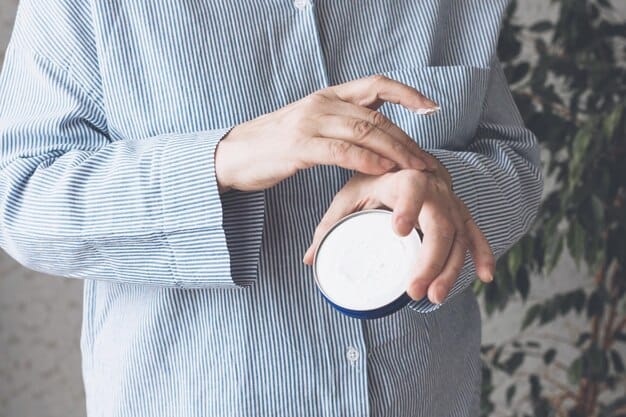Clear Skin in 30 Days: Stop Skincare Causing Acne

Advertisements
Achieving Clear Skin in 30 Days might sound ambitious, but many breakouts are triggered not by diet or hormones, but by the very skincare products we trust. Hidden irritants and overwhelming routines can quietly sabotage your complexion, leaving you frustrated instead of glowing.
Advertisements
If you’ve invested in expensive serums and creams only to face stubborn blemishes, you’re not alone. The truth is, improper layering, harsh formulas, and pore-clogging ingredients often play a bigger role than you realize.
This 30-day journey isn’t about buying more products, it’s about stripping back, identifying the true culprits, and giving your skin the breathing space it needs. With a smarter routine, your complexion can recover, balance itself, and reveal the clarity you’ve been chasing.
Decoding Acne: More than just Hormones
Advertisements
Acne, a condition often associated with hormonal fluctuations or genetics, frequently finds its roots in external factors, particularly within our daily skincare practices.
The common misconception that acne is solely an internal issue can lead many to overlook significant external triggers that, once identified, can be readily mitigated. Understanding the multifaceted nature of acne is the first step toward effective management and lasting clarity.
It’s crucial to distinguish between various types of acne and superficial breakouts.
While cystic acne or persistent nodules might signal deeper physiological issues requiring professional dermatological intervention, the more common forms, such as blackheads, whiteheads, and small red bumps, are often directly influenced by how we treat our skin.
The products we use, the frequency of application, and even the order in which they are applied can profoundly impact skin health, sometimes leading to unintended consequences like breakouts.
Skin’s natural balance and barrier function
Our skin possesses a delicate ecosystem and a vital protective barrier. This hydrolipidic film, a mix of sweat and sebum, along with the stratum corneum, acts as the first line of defense against environmental aggressors and helps retain moisture.
When this barrier is compromised, perhaps by harsh cleansers, excessive exfoliation, or irritating ingredients, the skin becomes vulnerable.
Such vulnerability can manifest as increased sensitivity, dryness, or, paradoxically, as an overproduction of oil in an attempt to compensate, leading to clogged pores and acne.
The goal of a healthy skincare routine should be to support, not strip or overwhelm, this natural barrier. Products that disrupt the skin’s pH, for instance, can create an environment conducive to bacterial overgrowth, including P. acnes, the bacteria commonly associated with acneic lesions.
Achieving balance is key; it’s about providing what the skin needs without tipping the scales.
Identifying external aggressors
While genetics and hormones play their part, numerous external factors can trigger or worsen acne. These include dietary choices, stress levels, and environmental pollutants. However, for the purpose of this examination, our focus remains on skincare.
It’s a category brimming with potential irritants and comedogenic (“pore-clogging”) substances. Even products labeled “non-comedogenic” may contain ingredients that could be problematic for certain individuals, highlighting the distinct nature of each person’s skin response.
- Occlusive Agents: Heavy creams and oils (e.g., mineral oil, lanolin, certain silicones) can create a barrier that traps sweat, oil, and dead skin cells, promoting blockages.
- Irritants: Fragrances, dyes, and some preservatives can inflame the skin, leading to redness and pustules, often mimicking true acne.
- Over-Exfoliation: While beneficial in moderation, excessive use of physical scrubs or chemical exfoliants (AHAs, BHAs) can damage the skin barrier, leading to breakouts.
- Improper Cleansing: Not removing makeup or sunscreen thoroughly can leave residues that clog pores, while over-cleansing can strip natural oils, leading to irritation.
By systematically evaluating potential external aggressors within your skincare regimen, the path to clearer skin becomes less daunting. The 30-day challenge aims to dissect these influences, step by step, to uncover the specific triggers unique to your skin.
This deep dive into the nuances of skin health, moving beyond a simplistic view of acne, paves the way for truly individualized and effective solutions.
Common Skincare Culprits: Ingredients & practices
In the quest for radiant skin, many well-intentioned individuals inadvertently introduce ingredients or adopt practices that act as hidden saboteurs, leading to persistent breakouts.
Navigating the world of skincare requires a discerning eye, especially when identifying the factors that might be contributing to acne. Understanding these common culprits is paramount in developing a routine that truly benefits your skin.
The usual suspects: Comedogenic ingredients
Not all ingredients are created equal, particularly when it comes to their potential to clog pores. While what’s comedogenic for one person might be perfectly fine for another, certain substances have a higher propensity to lead to blockages.
These are often emollients, binders, or thickeners that, while potentially beneficial for hydration or product texture, can create a film on the skin that traps dead cells and sebum.
- Certain Oils: Coconut oil, flaxseed oil, and even some heavier essential oils can be highly comedogenic for many skin types.
- Butters & Waxes: Shea butter, cocoa butter, and beeswax, while natural, can be too occlusive for acne-prone skin, leading to congestion.
- Lanolin and its Derivatives: Often found in intensely moisturizing products, lanolin can be a common trigger for breakouts.
- Synthetic Fragrances and Dyes: These are notorious for causing irritation and allergic reactions, which can manifest as acne-like lesions, particularly in sensitive individuals.
It’s advisable to cross-reference product ingredient lists with known comedogenic lists, though always remembering that individual reactions vary. Patch testing new products is crucial.
Over-exfoliation and barrier damage
The pursuit of smooth, clear skin often leads to the temptation of aggressive exfoliation.
While regular exfoliation helps remove dead skin cells and prevent clogged pores, excessive physical scrubbing or frequent use of strong chemical exfoliants (like high concentrations of AHAs or BHAs) can do more harm than good.
When the skin barrier is repeatedly compromised, it becomes inflamed, red, and far more susceptible to breakouts.
This inflammation can exacerbate existing acne and even trigger new forms of irritation, creating a vicious cycle of damage and reaction. The skin tries to protect itself by producing more oil, which, ironically, can lead to further blockages.
Improper product layering and routine overload
The order and quantity of products in your routine can be as critical as the ingredients themselves. Layering too many heavy or occlusive products, especially at night, can create an environment ripe for pore congestion.
For example, applying a rich moisturizer over a serum containing pore-clogging ingredients can effectively trap those ingredients against the skin for extended periods, increasing the likelihood of breakouts.
Moreover, using too many active ingredients simultaneously (e.g., multiple types of acids, retinoids, and vitamin C) can overwhelm and irritate the skin, breaking down its barrier function and making it more prone to inflammatory responses.
Simplicity often triumphs over complexity in skincare, particularly for acne-prone individuals.

The unseen culprits: Makeup and hair products
Beyond what directly touches your skin in your routine, makeup and hair products are often overlooked sources of acne. Foundations, concealers, and primers can be highly comedogenic, especially if they are heavily formulated with oils or silicones.
Regular cleaning of makeup brushes is also critical; dirty brushes can harbor bacteria and dead skin cells, transferring them directly onto your face.
Similarly, hair products like conditioners, styling gels, and hairsprays can creep onto the skin, particularly around the hairline, forehead, and back, leading to “acne mechanica” or product-induced breakouts, particularly if they contain oils that are heavy or fragrances that cause irritation.
Regularly washing your pillowcases is also a small but impactful step in preventing acne caused by accumulated product residue and oils.
By carefully scrutinizing ingredient lists, moderating exfoliation, simplifying your routine, and considering the broader impact of all products that come into contact with your skin, you can begin to systematically eliminate the common skincare culprits behind your persistent acne.
This methodical approach forms the backbone of a successful 30-day clear skin challenge.
The Clear Skin in 30 Days Strategy
Embarking on a Clear Skin in 30 Days strategy is a methodical, investigative process designed to pinpoint precisely which elements of your skincare routine might be causing breakouts.
This isn’t about throwing out everything; it’s about systematically stripping back to basics and then reintroducing products one by one, allowing your skin to react and reveal its sensitivities.
This focused approach provides clarity and empowers you to build a routine that truly works for you.
Week 1: Reset and simplify
The first week is dedicated to giving your skin a much-needed break. This “reset” phase involves temporarily halting the use of all but the most essential, gentle products.
The objective is to calm any existing inflammation, reduce the burden on your skin barrier, and allow your skin to return to a more neutral state, making it easier to observe reactions in subsequent weeks.
- Choose a Gentle Cleanser: Opt for a mild, fragrance-free, non-foaming cleanser. Look for ingredients like ceramides or hyaluronic acid that support the skin barrier. Cleanse twice daily, without scrubbing.
- Select a Non-Comedogenic Moisturizer: Pick a lightweight, oil-free moisturizer explicitly labeled “non-comedogenic.” Again, fragrance-free is best. Hydration is crucial, even for acne-prone skin, as it prevents the skin from overproducing oil.
- Apply SPF Daily: A broad-spectrum sunscreen with SPF 30 or higher is non-negotiable. Choose mineral sunscreens (zinc oxide, titanium dioxide) if possible, as they are often less irritating and less likely to clog pores.
During this week, observe your skin closely. Note any changes, improvements, new pimples, or changes in oiliness. Resist the urge to use any acne treatments, as these can obscure the true culprits.
This period of minimalism allows your skin’s natural healing processes to begin.
Week 2: Observing and journaling
With your simplified routine in place, week two is all about meticulous observation and record-keeping. The goal is to establish a baseline of your skin’s behavior without the influence of problematic products.
A detailed skin journal will become your most valuable tool.
Each day, take a moment for a daily skin check, both in the morning and evening. Observe any oiliness, redness, or new breakouts, paying attention to their number, type, and location, as well as your skin’s overall texture.
Alongside this, keep a simple record of your routine and diet, noting the skincare steps you follow and any significant changes in what you eat or how stressed you feel. This habit creates a clear picture of what might be affecting your complexion.
Patience is essential, as your skin may initially “purge” or react when products are removed or new ones introduced. The key is to distinguish between a temporary adjustment and a genuine breakout.
Over time, if certain products were indeed the culprits, you should begin to notice real improvement.
If your skin begins to clear during this week, it’s a strong indication that one of the products you removed was a major contributor to your acne.
If it doesn’t improve, or worsens, it might suggest the issue isn’t product-related, or that even your “gentle” choices are problematic. This stage is about gathering data.
Week 3: Strategic reintroduction
Now comes the cautious reintroduction phase. Choose one single product that you suspect might be a problem, or one that you genuinely miss. Introduce only one new product at a time to isolate its effects. This slow, deliberate process is critical.
Begin by introducing one product at a time, such as a serum or cleanser, and use it consistently for three to five days while keeping the rest of your skincare routine simple. During this period, monitor your skin closely for any adverse reactions like new breakouts, redness, itching, or excess oil.
If these issues appear, remove the product immediately to prevent further irritation.
For items you strongly suspect may cause problems, consider doing a patch test first by applying the product to a small, less visible area, like along the jawline, for a few days before committing to full facial use. This careful approach helps you identify triggers without overwhelming your skin.
If no adverse reaction occurs after 3-5 days, the product is likely safe to continue using. Then, move on to introducing the next single product. This methodical pattern continues until all questionable products from your original routine have been tested or dismissed.
Week 4: Refine and maintain
By week four, you should have a clearer understanding of which products your skin tolerates and which ones it doesn’t. This final week is about solidifying your new, minimalist, and effective routine.
- Establish Your Core: You should now have a foundational routine that consists of a gentle cleanser, a suitable moisturizer, and SPF that your skin agrees with.
- Incorporate Targeted Treatments (Cautiously): If your skin has improved, and you are still aiming for further clarity, you can slowly reintroduce active acne ingredients (like salicylic acid or retinoids) one at a time, again, with a minimum of 3-5 days between each new addition. Start with lower concentrations and less frequent use.
- Listen to Your Skin: Your skin will communicate with you. Pay attention to its signals. If something feels off, or new breakouts appear, revert to your simplified base routine and re-evaluate the most recently added product.
The 30-day elimination strategy is not a quick fix but a powerful diagnostic tool. It requires discipline and patience, but the insights gained are invaluable, helping you cultivate a routine that is both effective and sustainable for long-term skin health.
Choosing the Right Acne-Safe Products
The skincare market is overflowing with serums, cleansers, and treatments, making the process of choosing acne-safe products feel like an overwhelming challenge.
For anyone aiming for Clear Skin in 30 Days, the key lies in focusing on formulations that work with your skin rather than against it.
Gentle, barrier-respecting products are far more effective than harsh routines that strip your complexion of its natural balance. With the right approach, it becomes easier to separate truly effective solutions from marketing claims that can sometimes mislead.
Beyond Labels: Understanding “Non-Comedogenic” and “Oil-Free”
While labels such as non-comedogenic and oil-free are helpful starting points, they are not foolproof guarantees. Non-comedogenic products are designed to minimize pore clogging, but formulations and testing standards vary widely across brands.
Similarly, oil-free doesn’t always mean safe, since other occlusive or irritating ingredients can still sneak in. Achieving Clear Skin in 30 Days requires looking past buzzwords and paying closer attention to ingredient lists.
By learning to identify common irritants, steering clear of heavy fragrances and dyes, and incorporating proven actives like salicylic acid, benzoyl peroxide, and retinoids, you can create a routine that targets breakouts while remaining gentle.
Simpler formulations often perform better, addressing your skin’s needs without unnecessary additives.
Hydration and Barrier Support as Essential Allies
A frequent misconception is that acne-prone skin should be dried out to control oil production. In reality, this approach backfires, as stripped skin tends to produce even more sebum. True progress toward Clear Skin in 30 Days comes from supporting hydration and barrier health.
Ingredients like hyaluronic acid and glycerin act as lightweight humectants that draw moisture into the skin without clogging pores.
Ceramides play a vital role in repairing and strengthening the barrier, while niacinamide reduces inflammation, balances oil, and soothes redness.
Opting for lightweight gels or lotions rather than heavy creams ensures that your skin remains hydrated, resilient, and less prone to future breakouts.
The Role of pH and Product Compatibility
Few people realize how much the pH of skincare impacts acne control. Healthy skin thrives at a slightly acidic pH, typically between 4.7 and 5.7, which helps keep the barrier strong and harmful bacteria at bay.
Using cleansers or treatments with a high pH can disrupt this natural balance, weakening the skin and making it more prone to irritation.
To maintain progress toward Clear Skin in 30 Days, choose gentle low-pH cleansers, avoid overusing acidic exfoliants, and always patch test new products before applying them widely. This step not only prevents irritation but also helps you understand how your skin reacts to specific ingredients.
Building Consistency for Lasting Results
Ultimately, selecting acne-safe products is not about following trends but about building a consistent, informed routine that works for your unique skin. It takes patience, observation, and a willingness to adjust as needed.
By prioritizing barrier support, hydration, balanced pH, and carefully chosen actives, you dramatically increase your chances of achieving the transformation promised by Clear Skin in 30 Days, and maintaining it well beyond.
Beyond Products: Lifestyle Adjustments for Lasting Results
While refining your skincare routine is crucial, achieving Clear Skin in 30 Days often depends on more than just what you apply to your face. Lifestyle choices have a profound impact on skin health, influencing everything from oil production to inflammation.
Small, consistent adjustments in daily habits can amplify the effects of your skincare products and make it easier to prevent recurring breakouts.
Diet and Hydration: Fueling Skin from Within
What you eat and drink plays a direct role in the way your skin behaves. Research suggests that high-glycemic foods like white bread, sugary snacks, and processed carbs can trigger spikes in insulin, which may increase sebum production and worsen acne in some individuals.
Similarly, dairy, particularly skim milk, has been linked to flare-ups for people sensitive to it. To support progress toward Clear Skin in 30 Days, prioritize an anti-inflammatory diet filled with fruits, vegetables, lean proteins, and omega-3 fatty acids from sources like salmon, flaxseeds, and walnuts.
Staying well-hydrated is equally important, as water supports toxin elimination and helps your skin regulate oil and maintain elasticity.
Growing evidence also highlights the gut-skin connection, showing that probiotics and prebiotics from foods like yogurt, kefir, and sauerkraut may contribute to healthier, clearer skin.
The key is to track how your body responds and make gradual adjustments rather than adopting overly restrictive diets.
Stress Management: Tackling a Hidden Acne Trigger
Stress is one of the most underestimated yet powerful factors that influence acne. Elevated cortisol levels caused by ongoing stress stimulate oil glands, leading to clogged pores and breakouts.
For those aiming for Clear Skin in 30 Days, managing stress is as important as applying the right cleanser or moisturizer. Integrating mindfulness practices such as meditation, yoga, or deep breathing can reduce hormonal surges that aggravate acne.
Consistent, quality sleep also plays a vital role, as your body uses this time to repair and regenerate skin cells. Regular exercise not only lowers stress but also boosts circulation, improving nutrient delivery to your skin.
To avoid setbacks, always cleanse your face after sweating so that pores remain clear. Recognizing the connection between stress and skin is a powerful motivator to incorporate relaxation techniques into your routine.
Hygiene Habits: The Overlooked Essentials
Even the most effective skincare routine can be undermined by neglected hygiene habits. Simple actions, when repeated daily, protect your skin from unnecessary exposure to bacteria, oil, and irritants.
Start with your pillowcases, which quickly accumulate oils and product residue, washing or changing them every few days can prevent breakouts, especially for acne-prone skin.
Keeping your phone screen and glasses clean also reduces the transfer of bacteria to your face throughout the day.
One of the most important habits is resisting the urge to touch or pick at pimples, which only spreads bacteria and increases the risk of scarring.
Finally, remember that hair products and natural oils can irritate skin when in contact with your face; washing your hair regularly and keeping it tied back during sleep are easy ways to minimize flare-ups.
A Holistic Path to Clearer Skin
The journey to Clear Skin in 30 Days is not just about removing the wrong products but also about creating an environment where your skin can thrive.
Balanced nutrition, mindful stress management, and consistent hygiene practices all play vital roles in reducing breakouts and supporting overall skin health.
When combined with a carefully chosen skincare routine, these lifestyle adjustments can accelerate results and help maintain clarity long after the 30-day mark.
Knowing When It’s Time to Seek Professional Help
Even with consistent effort and a carefully designed routine, there are moments when achieving Clear Skin in 30 Days requires guidance from a dermatologist or other qualified professional. Acne is a complex condition influenced by hormones, genetics, lifestyle, and skin sensitivity.
While product elimination and lifestyle adjustments can resolve mild to moderate breakouts, persistent or severe cases often signal the need for targeted medical treatment.
Recognizing when to transition from self-care to professional care is key to avoiding unnecessary frustration and long-term damage.
Professional intervention becomes particularly important when breakouts are painful, cystic, or leaving behind noticeable scars.
These forms of acne often require prescription-strength solutions such as topical retinoids, oral antibiotics, or hormonal therapies, which are not available over the counter.
A dermatologist can also help identify less obvious triggers, such as underlying hormonal imbalances or skin conditions that mimic acne but require different treatment. This expertise ensures that your efforts are not wasted on trial-and-error approaches that may aggravate the problem.
Seeking help is also valuable when emotional well-being is affected. Acne can significantly impact self-esteem and confidence, especially when improvement feels out of reach.
A professional can provide reassurance, design a personalized plan, and introduce treatments like chemical peels, light therapy, or advanced prescription options that accelerate healing.
While the goal of Clear Skin in 30 Days is achievable for many through home strategies, professional support can transform the journey into a safer, faster, and more sustainable process, ensuring both your skin and confidence recover together.
Maintaining Clear Skin: Long-Term Commitment
Reaching Clear Skin in 30 Days is a powerful achievement, but the real challenge lies in sustaining those results over time. Acne-prone skin requires ongoing care, consistency, and adaptability.
Developing a thoughtful long-term strategy ensures your complexion remains clear and resilient, preventing old habits or overlooked triggers from undoing your progress.
Daily Consistency: The Foundation of Healthy Skin
A stable skincare routine becomes the backbone of lasting clarity. Skipping steps or frequently experimenting with untested products can quickly reverse progress.
Treating your skincare ritual as a daily health habit, just like brushing your teeth, helps preserve the results of your 30-day journey.
-
Stick to trusted basics like your gentle cleanser, non-comedogenic moisturizer, and broad-spectrum sunscreen. These essentials protect and maintain your skin’s barrier.
-
Stay consistent with active ingredients such as retinoids or salicylic acid, following product guidelines or professional advice to maximize their effectiveness.
-
Pay attention to changes in your skin. Hormones, stress, or environment may trigger temporary breakouts, so be ready to simplify your routine if irritation occurs.
Product Integration: Embracing a Minimalist Approach
The skincare market tempts us with endless innovations, but more products don’t always mean better results. A minimalist, intentional approach usually serves acne-prone skin best.
-
Introduce one product at a time, following the same cautious rhythm you used during your elimination phase.
-
Patch test new additions to avoid unexpected reactions, applying them to a small area before full use.
-
Do your research to ensure ingredients align with acne-safe principles, avoiding pore-clogging or irritating compounds.
-
Prioritize specific concerns like hyperpigmentation or early aging signs only after your acne is under control.
By resisting the urge to overload your routine, you maintain balance and prevent unnecessary irritation.
Adapting to Environment and Seasons
Skin is dynamic, and external conditions shape its needs. What works in one season may be less effective, or even harmful, in another. Adapting ensures your skin thrives year-round.
-
Climate matters: Gel moisturizers may be ideal in humid weather, while richer creams can shield your skin in dry, cold air.
-
Sun protection is non-negotiable: Broad-spectrum SPF prevents long-term damage and controls post-acne marks, even when breakouts seem under control.
-
Pollution defense: For those in urban areas, antioxidant serums like Vitamin C and diligent cleansing help counteract environmental stressors.
Adjusting your skincare with the seasons makes the results of Clear Skin in 30 Days more sustainable.
The Mental Side of Skincare Success
Achieving and maintaining clear skin isn’t just physical, it’s also emotional. The journey can feel overwhelming, but mindset plays a critical role in sustaining results.
-
Accept normal fluctuations and remember that occasional breakouts don’t erase your progress.
-
Celebrate milestones by focusing on visible improvements rather than chasing unattainable perfection.
-
Seek support when needed, whether through loved ones or professionals, to maintain confidence and emotional balance.
Long-term clear skin is about balance, consistency, and resilience. By combining daily discipline, smart product choices, environmental awareness, and self-compassion, you turn the short-term success of Clear Skin in 30 Days into a lasting reality.
| Key Action | Brief Description |
|---|---|
| 🔄 Skincare Reset | Simplify your routine to a gentle cleanser, moisturizer, and SPF for 7 days to calm skin and establish a baseline. |
| 🔍 Product Reintroduction | Add suspicious products back one at a time (3-5 days per product) to identify specific triggers for breakouts. |
| 🥗 Lifestyle Tweaks | Incorporate balanced diet, stress management, and hygiene habits (e.g., clean pillowcases) to support skin health. |
| 🩺 Seek Professional Help | Consult a dermatologist for severe, persistent, or scarring acne, or if at-home methods aren’t effective after 8-12 weeks. |
frequently asked questions about skincare and acne
While the 30-day strategy aims for significant improvement, individual results vary. You might notice subtle changes within a week, but major improvements or identification of triggers often takes 2-4 weeks. Be patient, as skin cycles and responses require time.
Absolutely. Makeup, especially foundations, concealers, and primers, can often contain comedogenic ingredients that clog pores. Dirty makeup brushes are also common culprits, harboring bacteria. Opt for non-comedogenic makeup and clean brushes regularly.
Yes, temporarily. The goal of the initial week is a complete reset using only a gentle cleanser, moisturizer, and SPF. Reintroduce active ingredients only after identifying baseline skin behavior and ensuring your fundamental routine is not causing issues.
Purging is a temporary increase in breakouts, usually within the first few weeks of introducing active ingredients like retinoids or AHAs, as they speed up cell turnover. A regular breakout is typically caused by clogged pores from products or other factors. Purging typically clears up within a few weeks, while breakouts persist.
Yes, it’s possible. While commonly linked, acne can also be primarily influenced by hormones, genetics, stress, or diet. If the 30-day strategy yields no significant improvement, consulting a dermatologist for a deeper diagnosis is the next crucial step.

Conclusion
The journey to clearer skin is often a process of careful discernment, especially when considering the role your daily skincare routine plays.
While persistent acne can be frustrating, adopting a methodical, investigative approach, like the 30-day elimination strategy, empowers you to systematically identify and remove potential culprits.
This involves simplifying your routine, meticulously observing your skin’s responses, and gradually reintroducing products to pinpoint sensitivities.
Beyond the products themselves, integrating supportive lifestyle factors such as a nourishing diet, effective stress management, and consistent hygiene practices creates a holistic environment for skin health.
Remember, patience and self-compassion are vital throughout this process, and knowing when to seek professional dermatological guidance is a crucial step towards achieving lasting clarity.
By becoming an informed, active participant in your skin’s well-being, you pave the way for a healthier, more radiant complexion.
Did you enjoy the content? Keep exploring our site and also read: Body Image Burnout: Reclaim Self-Love This Season.





